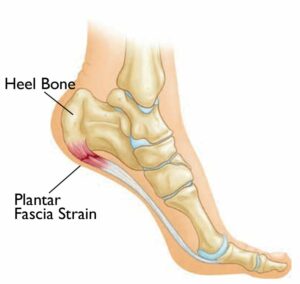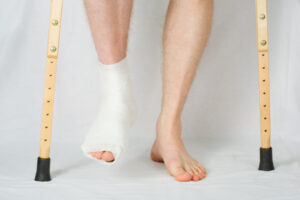Contents
Who Is A Podiatrist??

A podiatrist is a doctor that specializes in the medical treatment of your feet. They have an intensive education and learning process. After that, they become qualified podiatrists who can provide you with all the foot-related care you need. They can easily handle a variety of foot conditions. These are from simple issues like blisters and corns to serious problems such as diabetic wound care. Many people are often confused about what exactly podiatrists do. They can provide you with many different services that will significantly improve the quality of your life.
The word “podiatrist” is derived from two Greek words: podos meaning “foot,” and iatros meaning “a doctor.” The term was coined by Drs. John Martin Littlejohns, William Stokoe Cochrane, George Taylor Whitehouse Sr., Thomas McLean Anderson Jr., James Hinton Smith Jr., David Maitland Armstrong, Walter Prentice Riddell Jr, and Lewis Emmett Holt Jr. They all are who combined their individual names to coin the term “podiatry.”
Diseases Cured By Podiatrists
Podiatrists often provide cures to these diseases:
Plantar Fasciitis

The heel and bottom of the foot are tender to touch. There may be a burning sensation in the affected area as well. This condition can affect anyone regardless of their age, weight, or type of job they do. However, those who are overweight, obese, and those with high arches are more susceptible to getting this problem.
Sprains/Strains
Diagnose and treat injuries to the muscles, tendons, ligaments, joints of the foot. Treat conditions like neuromas (painful nerve pressure), heel spurs (excess bone growth on heels) plantar fasciitis (inflammation along soles).
Bone Fractures/Dislocations

Treat broken toes or other bones in the feet. They also fix dislocated toe or metatarsal bones that may cause pain when walking. Diagnosis includes X-rays for fractures that are missed by many doctors. They can refer patients with these symptoms to Podiatrists instead of orthopedists. Can put small pins into fractured foot bones to hold them until they heal. Fix misaligned big toe joint called hallux rigidus which can be a complication of arthritis.
Infections/Parasites
They can diagnose and treat fungal infections, athlete’s foot, or another type of infection. This may cause pain in the feet, especially with walking. Also treat parasites like lice, scabies, or plantar warts (causes painful growth on soles) by shaving away infected areas to keep from spreading to others.
Tendon Injuries/Diseases
Cure common tendon injuries such as Achilles tendinitis, inflammation at the heel bone. These are caused by very high arch called “high arched feet”. This is where tendons have been overstretched causing sharp ankle pain when walking. It also treats heel spurs if they are related to these conditions. Treat tendonitis in other conditions such as “tennis elbow” which is a common problem from overuse.
Nerve Problems

Diagnose and treat nerve problems like diabetic neuropathy, peripheral neuropathy, or damage to nerves due to injury. They also diagnose carpal tunnel syndrome. This is where the median nerve at the wrist becomes inflamed causing pain. This can be while walking or using hands. They can inject a local anesthetic into painful areas of the arm/leg. This can be if the doctor suspects this condition is related to foot disorders.
Arthritis
They treat arthritis by injecting a steroid medication directly into the joint for short-term relief. They then give some cortisone shots that last longer. But this is the process that you should repeat every few months. This may depend on the severity of the disease process. Re-align bones in feet that have been damaged due to arthritis. This is so they can support the weight more evenly while treating the cause of the problem.
Foot Injuries

They can treat injuries that happen at work or home. These are such as puncture wounds, burns, fractures. They also treat warts caused by HPV (human papillomavirus) where tumors develop on soles and toes usually with pain when walking. Sometimes they can remove tumors like these using surgical methods. This is to prevent foot pain if they don’t respond well to other treatments. It can be due to their size/location on feet.
Deformities In Feet
Diagnose and treat deformities in feet caused by disease processes. These are such as Charcot Marie Tooth which causes bone loss so patients walk very unsteady causing ankle sprains & fractures. It can be along with “claw toe” conditions where tendons push bones around until it is difficult for the patient to stand without falling over all the time. They operate on these conditions to prevent foot pain, ankle sprains/strains, and other injuries that cause problems walking.
Repetitive Stress Injuries

Treat conditions from working at a job. This is where they repeat the same movements over and over again. These are such as carpal tunnel syndrome or tendonitis in the foot, ankle, or leg due to lack of support for feet. Give special padding/support devices that cushion pressure points along with shoe inserts. This is so patients can walk more comfortably without pain. This may also prevent these injuries from happening again after treatment by Podiatrists
Why Should One Visit Podiatrist?
It’s important to understand that the foot is a complex structure. Everyone does not take the health of their feet seriously, yet they carry us through life every day of our lives. Even if you don’t have any particular problems with your feet now it’s always good to know where the podiatrists are located. You can also know how much do they charge for their services. This is so later on when an emergency occurs or just feels pain in your foot one can visit them immediately.
There is a great need for people to visit a podiatrist regularly. This is so if they want to avoid such ailments caused due to feet problems in the future. You can always prevent some diseases through regular check-ups at the doctor’s clinics. These include heel spurs, diabetic foot disease, and flat feet. You must keep visiting your doctor often. This is so that he could cure any other problem related to the knees or ankles. These might otherwise turn into a serious condition later on. If you visit the regularly could, you can prevent foot ailment. These are such as plantar warts, athlete’s foot, and fungus toenails.
What You Should Expect From Podiatrist?
Some expectations that you may have from a podiatrist are that they provide relief for your ailment. Some others are that they answer your questions about the ailment. You can expect that they give you medication for relief. There can be another expectation that they provide an overall pleasant experience.
You should expect to know what you are in for before seeing the podiatrist. You should get all of your questions answered before coming. This is because it will be difficult to get them answered while there. The only way to get medication is by getting approval from the podiatrist. This is so if they don’t want to prescribe one, don’t expect to be able to walk out with pain relievers. If the appointment is not going well or you feel uncomfortable, do not hesitate to leave or ask that your appointment be rescheduled.
Treatments Suggested

Podiatrist suggests these some treatment options:
- One of the main treatments is corrective footwear. Corrective shoes are designed to reduce pressure on specific bony prominences, which would normally cause discomfort in regular shoes.
- Orthotics also known as inserts are another treatment option that podiatrists frequently prescribe for foot-related conditions or pain. They help treat flat feet, high arches, and other issues associated with walking or standing.
- Other forms of treatment include modifying activities by reducing walking time, using ice packs for inflammation relief. You can also take anti-inflammatory medications if necessary.
Conclusion
People often neglect their feet, which can lead to pain and discomfort. If you’re suffering from foot problems like bunions or corns, a podiatrist may be able to help! Podiatric surgeons will diagnose your condition by examining the soles of your feet. They’ll also ask about any past injuries that you may have. This is in order to find out what’s causing your pain. In some cases, treatment involves wearing orthotic devices such as shoe inserts or braces for arch supports. Other treatments include surgery on the toe, nail removal therapy (if you suffer from ingrown nails). They even suggest laser therapy for fungus infections. Whether you walk around barefoot all day at home, spend most of your time standing up at work. You can contact us for the best treatment.
Do you want to get rid of diabetes? Join our online diabetes consultation program and reverse your Diabetes naturally through lifestyle changes such as a Personalized Diet plan, Exercise, dieticians, and health coaches.


